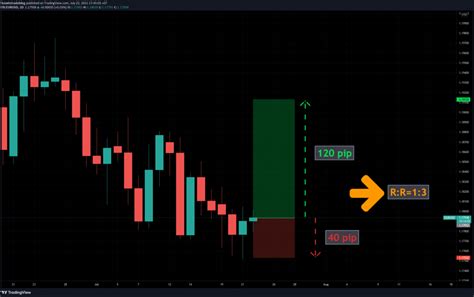Risk-Recompension ratio assessment in crypto-cypto investments
The world of cryptocurrencies has been in a rollercoaster of hype and uncertainty, prices fluctuating wildly in recent years. As a result, many investors seek ways to alleviate potential losses while maximizing yields. A crucial factor to consider when evaluating crypto-fringo investments is the risk-recompensation ratio.
What is the Risk-Recompension ratio?
The risk ratio is the mere mathematical calculation used to determine if the investment is worth pursuing or if it is better to move away. It is a simple equation that takes into account two key values: potential profitability of investments (ROI) and the expected risk.
In cryptocurrency, ROI refers to the rate of modification of the price of a specific symbol over a period. This can be expressed as a percentage or amount in dollars. For the exam, if the price of a symbol increases with 1 dollar per unit, it is ROI would be 100%.
The level of risk expected, on the other hand, is the measures by the volatility of the investment. Volatility refers to the degree of uncertainty associated with the movements of the prices of an asset. A lower risk investment will have a more stable and predictable yield, while a higher risk investment can have a higher potential for significant losses.
How to evaluate the Risk-Recompension ratio
To evaluate the risk-recompension ratio in cryptocurrency investments, follow these steps:
- Research : Performs thorough research on the token, including its market capitalization, trading volume and recent price movements.
- understand technology : familiar with the basic technology behind the token, such as blockchain or artificial intelligence (AI).
- Evaluate the offer and request : Analyze the offer and request for the token, including the number of currencies available and the marketing feeling.
- Analyze the price models

: Review historical prices data to identify trends, patterns and volatility.
- Potential ROI : Calculate the expected yield of investments using the ROI metric.
- Consider risk factors : Identify any risk factors associated with investment, such as regulatory changes or market instability.
Types of Risk-Recompension Risk Reports
- High risk, low -reward : This type of report is characterized by high volatility and a relatively small potential yield. Examples include speculative cryptocurrencies such as Dogecoin (Doge) and Shiba Inu (Shib).
- ** The medium-risk, medium-compensate report includes othercos, such as Ethereum Classic (etc) and Cardano (ADA).
- Low risk, high reward : This type of report is characterized by relatively stable prices and a powerful potential for significant earnings. Examples include stablecoins like Tether (USDT) and DA.
Best practices for rating-recompensal ratio assessment
- Diversify the portfolio : Spread -you invest in different cryptocurrencies to minimize the risk.
- Set clear goals : Define -Investment goals and risk tolerance before making decisions.
- monitors market conditions : Continuously monitored market trends and adjust -va strategy according to
- Do not invest more than you can afford to lose : Set a budget for each cryptocurrency and avoid investing money that is not available.
Conclusion
Evaluation of the Risk-Recompension Report is an essential step in making the informed decision on investments in cryptocurrency. Understanding the potential ROI, the level of risk and market conditions, investors can take more informed choices about what chips to invest in and when. Remember to diversify your portfolio, set clear goals and do not invest more than you can afford to lose.